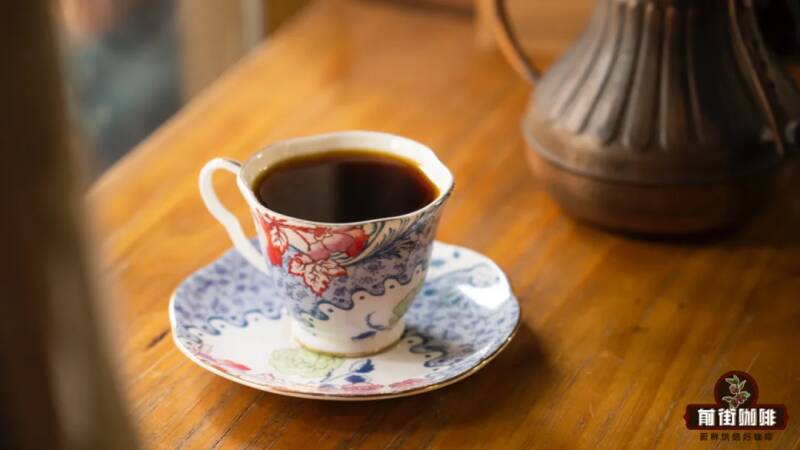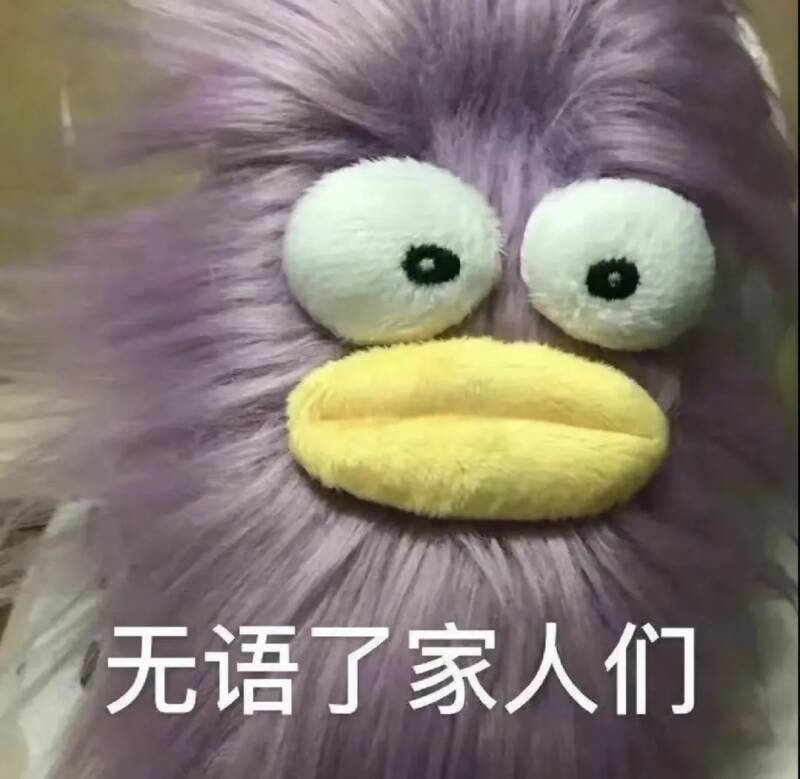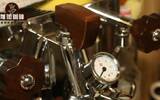What does Swiss water-treated decaf coffee taste like? What is the difference between natural low cause and artificial de-cause?
For most people, the reason for the initial drinking of coffee is only to refresh the effect, but did not think that with the increase in the frequency of drinking, gradually become a puppet of the aroma of coffee. But we all know that coffee is refreshing because it contains a lot of caffeine, which is not only a refreshing medicine, but also a yoke to limit coffee consumption.

Because when a person drinks too much caffeine, it is easy to have insomnia, palpitations and other health problems. Especially for a large number of caffeine intolerant people, the effect is particularly obvious. Therefore, in order to avoid this kind of situation, we need to control our caffeine intake. The average adult's caffeine intake had better not exceed 400mg, which translates to about five cups of hand-brewed coffee made with 15g beans and about four cups of espresso made from 20g beans. If people are intolerant of coffee, they will have less cups to drink.

Obviously, for friends who are addicted to caffeine, the amount of cup is very small. If you want to drink more coffee without increasing your caffeine intake, then the best choice is decaf!
What is decaf? Decaf we can directly understand is: lower caffeine content of a kind of coffee, because it is a relative concept, An is lower than B caffeine, then it is decaf. There are two kinds of low-caffeine coffee, one is natural growth, the other is artificial decaying. Let's start with naturally grown decaf. Take the two most common types of coffee on the market, Arabica and Robusta. Arabica coffee beans have an average caffeine content of 1.2% in the range of 0.9% to 1.4%, while robusta beans have twice as much caffeine as Arabica in the range of 1.8% to 4%, so relatively speaking, Arabica is also a kind of "decaf coffee" in front of Robusta.
But in fact, real decaf coffee is half as caffeinated as regular Arabica beans. Why is it regular Arabica beans? Because decaf is also a member of Arabica. The "pointed bourbon" variety found on the original island of Bourbon, now the island of Reunion, has only half the caffeine content of conventional Arabica species, so it can be known as "decaf". But the emergence of artificial decaffeinated coffee illustrates the fact that natural decaf coffee is in short supply. And this is not only caused by the high market demand, but also because this natural decaf coffee is not good to grow.
Why is it difficult to grow natural decaf coffee? In the final analysis, it is caffeine. Caffeine acts as a pick-me-up when we drink coffee, while caffeine protects against pests when coffee beans are grown. However, due to the low caffeine content of decaf coffee, it is difficult to resist insect pests, making it more difficult to grow.
On the one hand, there is a huge demand for decaf in the market, and on the other hand, there is not enough decaf. What should we do? Then it can only be "nurtured" manually.
Artificial decaffeinated coffee before introducing the widely spread methods of decaffeination, Qianjie would like to share with you the first person who successfully gave decaffeination to coffee. He is Mr. Ludwig Roselius of Germany.
In 1903, Mr. Ludwig Roselius invented the method of using benzene as solvent to extract caffeine from raw coffee beans, which was a great success. Caffeine from raw coffee beans was completely extracted, so he successfully obtained a patent in 1906. But, you know, this method is actually very hard, because benzene is a carcinogen.
So this way has naturally been eliminated! Nowadays, there are three well-known low-caffeine treatments, and the decaf produced by these methods can perfectly meet the decaf standards set by various countries! For example, according to the European Union standard, the caffeine content cannot exceed 1% of raw beans, while the FDA standard of the US Food and Drug Administration is eliminated to less than 3% of the original caffeine content. Then let's share these three well-known ways to deal with the cause from Qianjie. They are: direct / indirect solvent treatment, supercritical carbon dioxide treatment, Swiss water treatment.
Solvent treatment direct / indirect solvent treatment is the use of dichloromethane / ethanol acetate and other chemical solutions to soak raw coffee beans, and then dissolve caffeine. Because ethyl acetate as a solvent mainly comes from sugarcane, the solvent method using ethyl acetate will also be called "sugarcane decontamination".
The specific operation of direct solvent treatment is to first use steam to open the stomata of raw coffee beans, then pour the solvent into it to merge it with caffeine in raw coffee beans, and then wash out the caffeine-filled solvent. finally, the coffee beans are boiled again to evaporate and remove the residual solvents in the body, so that the treatment is complete. The indirect solvent treatment rule is to soak the caffeine and flavor substances in the coffee beans in hot water, then remove the hot water, remove the caffeine in the hot water with solvents, and finally pour the coffee beans back to absorb the flavor substances back. The advantage of solvent treatment is that it is cheap and easy to operate. But the disadvantage is very prominent: there will be caffeine, or even some solvent residues. Because dichloromethane solvents are now widely believed to be harmful substances, such a production method with safety risks is gradually not used by people.
Supercritical carbon dioxide treatment the rule of supercritical carbon dioxide treatment is to let the coffee beans soak in water and make them expand, and the caffeine molecules will become loose in the coffee beans! At this point, we are adding liquefied carbon dioxide and creating an atmospheric pressure higher than 100 in the water. It can be said that the goal of carbon dioxide is very clear, while it takes away the caffeine in the process, it will not "pick up" other substances from the coffee beans. So this can form a certain guarantee for the flavor of coffee beans.
But the disadvantage is also very obvious, that is, it is too expensive! Need to purchase professional equipment to deal with, the cost is extremely high, it is difficult for anyone to support such an expensive price, so it is the least frequent use of the three.
Swiss water treatment is finally the Swiss water treatment method! It was developed by the Swiss company Coffex in the late 1970s, and SWISS WATER ®is currently patented. This treatment method is very special, it uses the principle of saturated / unsaturated solution. The specific method is to soak a batch of coffee beans with hot water, and then make the hot water completely dissolve out the substance in the coffee, thus reaching a state of saturation. At this time, the raw beans are removed and the caffeine in the solution is filtered out with activated carbon. At this time, only caffeine is missing in the solution, other flavor substances are still in the water, and the water becomes a pool of "flavor saturation". Next, you only need to pour other raw coffee beans into the water to soak. Because the flavor molecules are already filled with the edges and corners of hot water, the hot water will no longer dissolve the flavor substances in a new batch of coffee beans, only caffeine. Finally, you can get a batch of low-caffeine coffee with flavor. And this pool of hot water only needs to apply the same method to reuse, it can be said to be very simple, the price is also suitable. As a result, water treatment in Switzerland has become the mainstream way of de-causation since its introduction.
But! That said, Swiss water treatment still takes away substances other than caffeine, including coffee flavor, but not so much. So what we need to know is that artificial decontamination does not taste as good as regular coffee. Qianjie currently has a decaf coffee from the Columbia Huilan area, which is treated with Swiss water. The flavor of its coffee is not much different from that of regular Colombian coffee, with a well-balanced flavor of nuts, cocoa and caramel caused by caramelization. Although there are no special bright spots, it can still have a distinct coffee taste when there is almost no caffeine! Having a bike is enough!
-END-
Important Notice :
前街咖啡 FrontStreet Coffee has moved to new addredd:
FrontStreet Coffee Address: 315,Donghua East Road,GuangZhou
Tel:020 38364473
- Prev

Is American coffee fancy? What is the definition of fancy coffee? What is the general term for espresso coffee?
"Fancy coffee" is a term that often appears in major articles. Precisely because the name has the word fancy, some friends who have just started often interpret it in its literal meaning, for example: "fancy is coffee with a pull flower pattern on the surface", or: "fancy is the ability to make pull flower."
- Next

What is the right degree of grind for espresso? What should I do if the pressure value of the coffee machine cannot go up?
Surprise questions! What is the biggest difference between the extraction method of an espresso machine and the extraction method of a group of people making, brewing and brewing coffee? That's right, it's the difference between pressure! The former is pressurized extraction, while the latter is atmospheric pressure. Because of the pressure, espresso coffee can be extracted in a very short time! and condense the top layer
Related
- What effect does Italian American coffee with filter paper have? Will coffee taste better if it is put on filter paper at the bottom of the powder bowl?
- What is the color difference in coffee beans? What are the characteristics of honey processed coffee beans? Why are the anaerobically treated coffee beans uneven in color?
- How does novice Xiaobai quickly get started and make coffee? Newbies learn to make coffee by hand and share the specific steps and process process!
- Costa tea has a shelf life of 100 years?! Expert: Unable to verify
- It's a huge uproar! American milk addition was rejected by Manner employees?!
- Mocha pot coffee bean recommendations| How fine and how much powder should be used for grinding? What parameter ratios do I need to use to make milk with Mocha pot coffee?
- What are the characteristics of the world's top ten coffee beans treated with Costa Rica honey? How to make black honey kadura from Tarazhu Pilon Processing Plant taste good?
- How to make deep-roasted coffee? What grinding water temperature does authentic Jamaica Blue Mountain No. 1 coffee use to brew it well?
- Selected high-grade rose summer coffee flavor tasting guide Why Panama rose summer has the aroma of flowers and fruits
- What equipment does a novice Xiaobai need to buy to learn to make coffee? Filter cup electronic scale bean grinder manual flushing pot purchase guide

